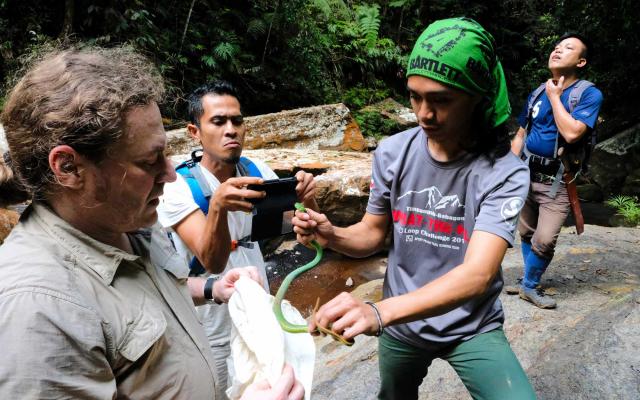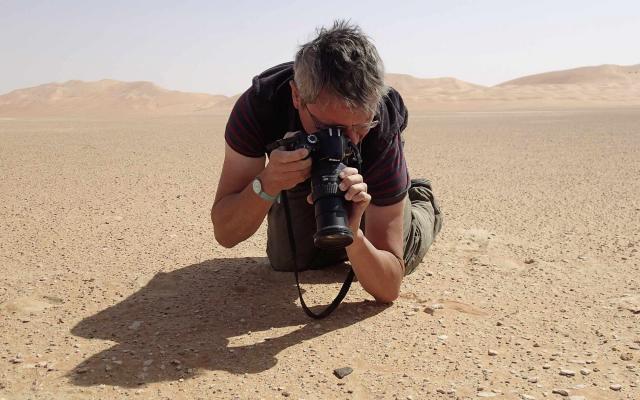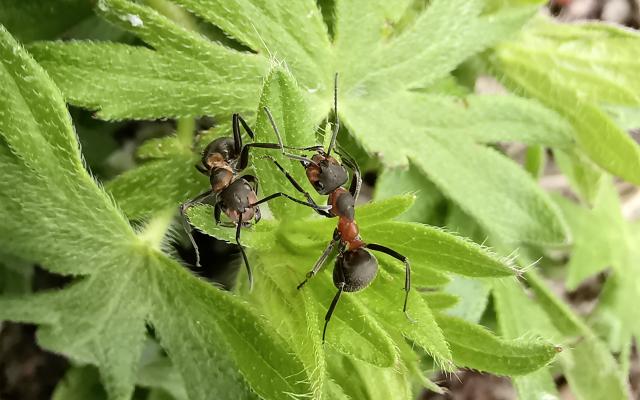‘How was your holiday?’ – whenever Manuel Schweizer, curator of ornithology, returns from a research trip, he gets asked the same question again and again. ‘Working outside in the field is definitely the nicest part of my job and makes up for the many hours spent in the lab, in collection rooms or in front of the computer, but it’s also exhausting’, stresses Schweizer. Searching for specific birds, he travels hundreds of kilometres on dirt roads in a rickety old Russian military bus through the Mongolian steppe. ‘What’s the point of all this?’ – another question Schweizer is asked nearly as often.
Why are there no parrots in Switzerland?
Schweizer’s research investigates the origins of species diversity, specifically among birds. With a little luck, a hike in the high mountains of the Swiss Alps will give you the chance to spot a snowfinch, a sparrow-like bird with striking white-black wings. However, on a similar trekking tour in the mountains of Tibet, you are likely to observe up to six different species related to our snowfinch. You will also notice bright pink finches flying by, known as rosefinches, which you won’t find in the Alps. When it comes to parrots, however, you won’t encounter any in Tibet, nor in the Alps. In South America, on the other hand, different types of parrots have populated virtually all available habitats, including the high mountains.
Today, scientists are still puzzling over many of the things that once preoccupied Darwin
Different parts of the world are home to very different species – birds, mammals and invertebrates. The tropics are generally more diverse when it comes to species. Renowned naturalists such as Alexander von Humboldt, Charles Darwin and Alfred Russel Wallace have given thought to how this different distribution of species diversity can be explained. But even today, many things remain unclear, and these unknowns are the subject of current research in biogeography. This is also the field in which Manuel Schweizer, curator of ornithology at the Natural History Museum, is involved. His doctoral thesis focused on the history of the emergence of parrots, but he has long been fascinated by the biogeography of birds in the deserts, grasslands and mountains of Eurasia and Africa.

The pale subspecies that proved to be a species in its own right
‘In order to be able to investigate species diversity, specifically its origins and geographical distribution, there is one condition: you need to really know it well’, says Schweizer. But even with a well-researched group like birds, this knowledge isn’t always there. While working on a bird field guide for Central Asia, Schweizer first took a close look at sand martins, small brown migratory birds that breed in self-dug caves. For a long time, ornithologists believed that there was only one species of sand martin in Eurasia, until Russian researchers made an important discovery in the 1990s: in Central Asia, a pale variety and the normal sand martin occur in the same areas – without forming mixed pairs. From then on, the pale variety was regarded as a species in its own right, the pale martin. Later, it was possible to document genetic differences between the two. But the matter gets a little more complicated: a recent publication detailing morphological and genetic analyses carried out by Schweizer and collaboration partners showed that pale martins could also consist of several ‘cryptic’ species.
In biology, a cryptic species is a morphologically indistinguishable group (population) of living beings in which sexual reproduction with other individuals (previously identified as) of the same species is not possible or only produces offspring that are not capable of reproduction. This is also known as reproductive isolation. Since an important criterion of the definition of a species (the reproductive ability among individuals) is not fulfilled, they cannot belong to one and the same species (Source: Wikipedia).
The Natural History Museum of Bern’s bird collection comprises around 34,000 objects. The majority is made up of bird skins (8,068 objects) and mounted birds (6,866 objects). Bird skins serve scientific purposes and are prepared by retaining the beak, legs and toes, along with the skin and feathers. Mounted birds are stuffed birds, like those found in museum exhibitions. The preparation of mounted birds is extremely time-consuming; nowadays, objects are therefore only prepared on mounts if they are to be shown in exhibitions. The collection also contains a significant number of bird eggs (8,954 clutches or single eggs), skeletons and/or skulls (2,017 objects) as well as more than 800 tissue samples.
What makes the Bern bird collection special are the extensive holdings of specimens of European bird fauna, in particular from Switzerland, as well as from South America (mainly Brazil) through the collection of the well-known naturalist Emil August Göldi (1859–1917). A more recent addition is the skeleton collection of parrots (now 69 species) gathered from the studies of Professor Marcel Güntert and Dr Manuel Schweizer, which has become the NMBE’s unique selling point.
In other ongoing projects, Schweizer is investigating the species formation processes in wheatears and the biogeography of the rosefinch, to name a few examples. Perhaps he will find an answer to the question of why they are so species-rich in the Himalayas but have not colonised our Alps.
Genetic material from toes
The pale martin occurs not only in Central Asia, but also on the Tibetan Plateau, in the southeastern lowlands of China and in the northwestern Indian subcontinent. These populations not only differ slightly in their colouring and shape, but have proven to be genetically distinct from each other. These findings were based on analyses of bird skins from museum collections – bird skins prepared for scientific purposes including feathers, beaks, legs and toes. Not only can differences in plumage and shape be observed using these skins, they also serve as a source of DNA. The horn material in the toes can also be used to obtain DNA for genetic tests on specimens that are more than one hundred years old. Freshly collected blood samples from captured birds were also included in the study. With this mission in mind, Schweizer and his collaboration partner Dr Yang Liu from Sun Yat-sen University in Guangzhou, China, travelled to the Tibetan Plateau in 2016. In Tibet, they drove many hundreds of kilometres in search of pale martins at an altitude of over 3,000 metres, but only discovered a larger colony on the penultimate day of the expedition.
Many questions remain unanswered
Last spring, in June 2018, Schweizer and Professor Sundev Gombobaatar from the National University of Mongolia went on an expedition to Mongolia to search for pale martins. The study of these birds is far from complete. Schweizer is currently supervising a doctoral thesis together with Professor Gerald Heckel from the University of Bern. Is there really no breeding between the different types, and is it possible to find genetic adaptations to their different habitats, whether they’re high mountains, the grasslands of Central Asia or subtropical areas? These are the central questions they want to investigate with the help of data from the entire bird genome.






